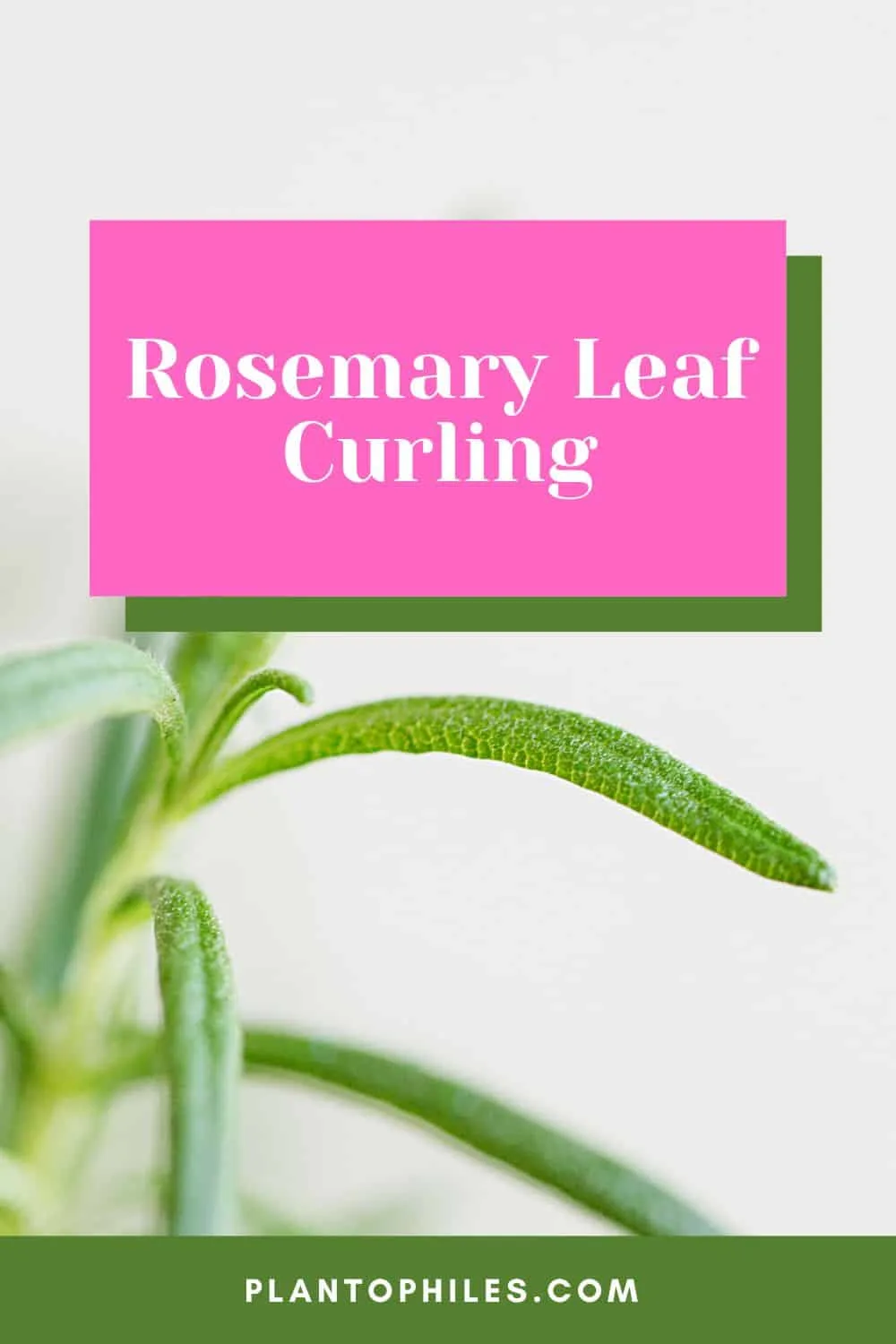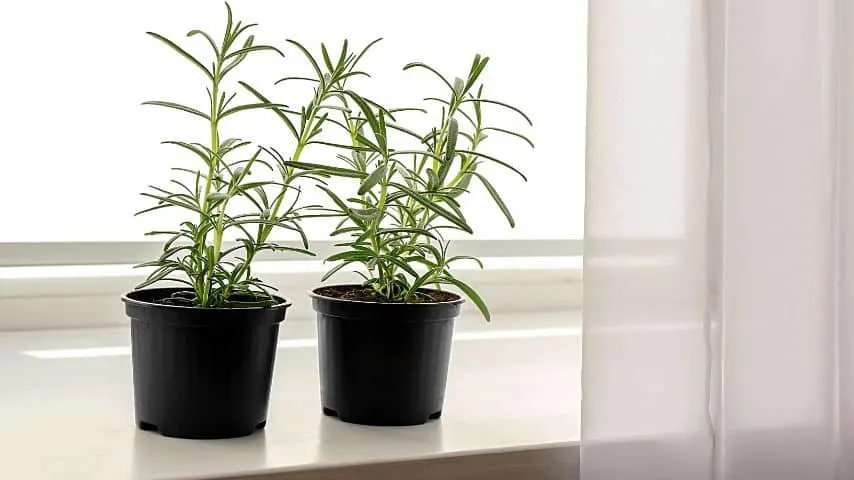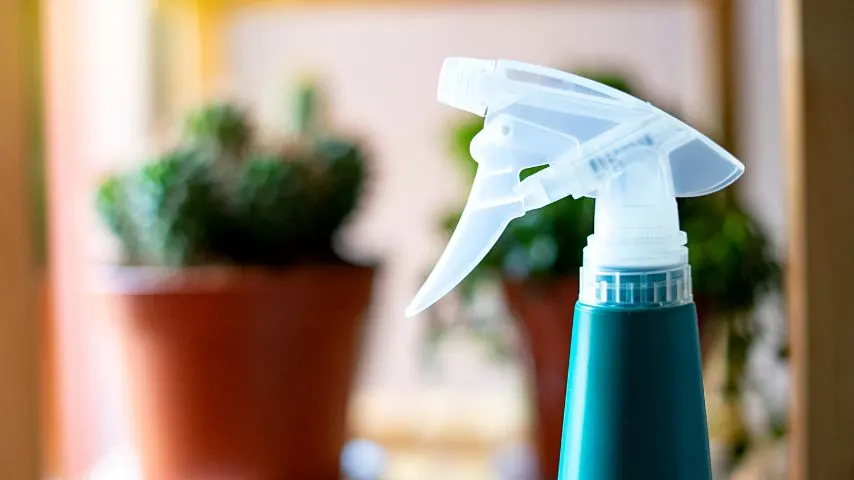Growing herbs indoors can be incredibly rewarding, convenient, and cost-effective. However, growing herbs is not without its challenges based on my personal experience.
I am currently growing rosemary and once its leaves started to curl, this is what I found out.
Table of Contents
Rosemary Leaf Curling
Curling rosemary leaves are typical when this herb is grown indoors. Rosemary leaves curl due to too much or too little humidity. While it’s not detrimental for your rosemary to bend a little, rectify the issue before it gets out of hand or goes on too long, potentially killing your rosemary plant.

Understanding Curled Rosemary Leaves
If the leaves on your rosemary plants tend to curl, you’ve got a humidity issue.
It’s more common to see curling leaves on a rosemary plant grown indoors as they acclimate more quickly to how outdoor temperatures fluctuate.

Curling rosemary leaves can be frustrating for indoor herb gardeners, but try not to get discouraged. After all, when you know the cause, you know how to better the situation!
So, we know that rosemary leaves tend to curl when the humidity in the room is insufficient. This curling can happen when there’s too much humidity, and you might also notice some drooping.
In most cases, rosemary leaves curl because there is not enough humidity in the air.
Because rosemary is native to rocky coastal areas with high humidity levels, you’ll want to try and replicate those growing conditions when you grow rosemary inside.
If you’re growing rosemary or plan to in the future, you’ll need a humidity level of around 60%, which you can measure with a hygrometer.

Fixing Curling Rosemary Leaves
If your rosemary leaves are curling, they’re too dry. It’s up to you to provide the extra humidity in the room to ensure that they thrive, and there are a few ways to accomplish this.
You can apply each moisture-enhancing method at once to increase your chances of succeeding.
1. Move Your Rosemary Plant
This option may seem relatively straightforward and simple, but changing the location of your rosemary plant might be the solution to fixing its curling leaves.
Houses tend to offer quite a bit of space for a small plant like rosemary (though they can grow pretty large), and the humidity levels are forever changing.
Different areas of the same room can have varying humidity levels, so moving your rosemary could be all you have to do to stop the leaves from curling.
Humidity is nothing more than water in the air, so the places in your home where you utilize more water, such as the kitchen sink, could be an excellent spot to grow rosemary. A bathroom window might be even better!

When moving your rosemary, choose a place within the home that is warmer and humid. A corner kitchen windowsill comes highly recommended by me.
Take care to keep them away from heating vents, as that will be much too hot.
2. DIY Humidifier
A DIY humidifier is a fantastic and budget-friendly way to increase the humidity in the air around your rosemary plants.
Purchase a plant saucer and fill it with rocks or pebbles. If you take the pebbles (gravel will work, too) from outside, wash them thoroughly to remove any possible insects or pests.
Put the pebbles in the saucer and cover them about 3/4 of the way with water. Next, place your rosemary planter on top of the saucer, and the water will slowly evaporate, hydrating your rosemary plant.
This method allows you to keep your rosemary plant wherever you’d like in your home and ensures that it will always have enough humidity.
3. Spray Bottle
The spray bottle requires a bit more effort on your part, as you should spray down your rosemary plant at least two to three times every week.
You can purchase an empty spray bottle at any major retailer (Walmart, Amazon, Target) or almost at every dollar store. Fill it with water, and spritz your rosemary to keep it humid.

If you choose the spray bottle method, be sure that you leave the spray setting on mist instead of jet or stream.
Watering the leaves can lead to fungal infections, so be careful regarding how much water you apply. Two or three sprays will do!
Frequently Asked Questions About Rosemary Leaf Curling
Why is my rosemary leaf curling?
Rosemary is an herb that really appreciates high humidity levels, so the leaves are probably curling on your rosemary plant because they’re too dry. A DIY humidifier, traditional humidifier, or moving your plant can help!
Does curling leaves mean my rosemary plant is dying?
Curling leaves on a rosemary plant are a symptom of dry conditions that lack humidity. While this won’t cause your plant to die immediately, your rosemary will eventually die if left untreated.
Conclusion Rosemary Leaves Curling
Rosemary leaves are curling because the humidity is too low. If you ensure that you keep your indoor rosemary growing in a high-humidity environment its leaves will not curl. Rooms such as the kitchen are suited to grow rosemary. Alternatively use a humidifier or a spray bottle.

Daniel has been a plant enthusiast for over 20 years. He owns hundreds of houseplants and prepares for the chili growing seasons yearly with great anticipation. His favorite plants are plant species in the Araceae family, such as Monstera, Philodendron, and Anthurium. He also loves gardening and is growing hot peppers, tomatoes, and many more vegetables.


